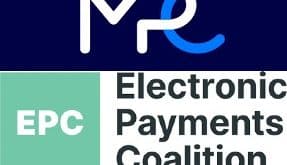Credit cards began staging a somewhat wobbly post-recession recovery in 2010 and 2011. But new figures from First Data Corp. and Visa Inc. indicate credit card charge volume is back to just about full health.
In a mid-March investor presentation, Visa reported that U.S. credit card payment volume increased 11% from Jan. 1 through Feb. 28 over the same timespan in 2012. The leading payment network also said that debit volume decreased 3%. Visa did not disclose actual volume or transaction figures.
Meanwhile, the most recent SpendTrend report compiled by First Data Corp., the biggest payment processor, shows that credit cards far outpaced other major payment forms for growth in February. Credit card charge volume grew 7.9% from February 2012’s levels while signature-debit dollar volume increased 2% and PIN-debit volume 1.3%. Closed-loop prepaid card volume increased 3.2% while check volume, continuing its long-term decline, fell 4.2%.
First Data’s SpendTrend report for January says credit card charge volume jumped 9.2% from a year earlier versus 4.3% for signature debit, 2.3% for PIN-debit, 1.8% for closed-loop prepaid cards, and a decline of 4.6% for checks.
Analysts began noticing a credit recovery about two years ago. Although job creation since then has been mostly tepid, in recent months it has begun to pick up and other measures of economic activity are improving too. Consumers use credit cards more when they feel good about their economic prospects, says Beth Robertson, director of payments research at Pleasanton, Calif.-based Javelin Strategy and Research, now a part of Greenwich Associates.
“I think it is just because we’re seeing this turnaround in consumer confidence, primarily,” Robertson tells Digital Transactions News.
Robertson says the Visa and First Data numbers confirm what Javelin found in an October survey of consumers’ payment preferences at the point of sale. A report about the survey, which asked more than 3,200 consumers about their use of credit and debit cards as well as checks and cash, will be out soon.
In addition to consumers being more willing to pay for purchases with credit cards, banks are providing some fuel to the credit trend. In the recession, many card issuers severely reined in their loss-wracked portfolios by closing risky accounts, trimming credit lines, and scaling back their account-acquisition efforts. Now they’re relaxing a bit.
“We’re seeing some loosening of the standards in that consumers who were turned down for credit a few years ago are getting it today,” says Robertson. Regarding credit limits, she adds: “We’re seeing them raised.”
Robertson notes, however, that issuers are hardly yet to the point of handing out credit willy-nilly the way they did before the recession.
Another factor playing an undetermined role in credit’s revival is the Durbin Amendment in 2010’s Dodd-Frank Act, which cut the interchange income of big debit card issuers by about 50%. Some banks responded by encouraging customers to switch purchases to credit cards, Robertson says. The Durbin Amendment also caused a massive switch in volume away from Visa’s Interlink PIN-debit network, although Visa says its signature debit card business is still growing.
In its analysis of February’s charge volumes, First Data noted that total dollar-volume growth slowed to 4.6% from 6.2% in January. Higher payroll taxes, a delay in federal tax refunds, high gasoline prices and nasty winter weather in many parts of the country restrained spending, the processor said.
First Data also waved a caution flag at the growth in credit card purchases. “The fact that the personal savings rate significantly declined in January and consumers shifted more spending onto credit cards could be a sign that consumers may be overstretched,” Rikard Bandebo, vice president and economist at First Data, said in a statement. “However, there are many other factors that could impact spending going forward including an improving labor market, steadily rising home values, healthy gains in the equity markets and the federal budget sequestration.”
Other data, however, indicate that Americans aren’t getting intoxicated again on plastic credit, at least not yet. The Federal Reserve Bank of New York recently reported that credit card balances stood at $679 billion as of Dec. 31, down 3.6% from $704 billion at the end of 2011 and up less than 1% from their level in 2012’s third quarter. And last week, the Federal Reserve Board estimated that total revolving credit, most of which is credit card debt, grew at an annualized rate of just 0.1% in January after contracting by 4.4% in December on a seasonally adjusted basis.





